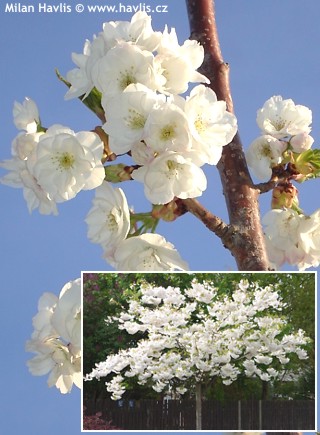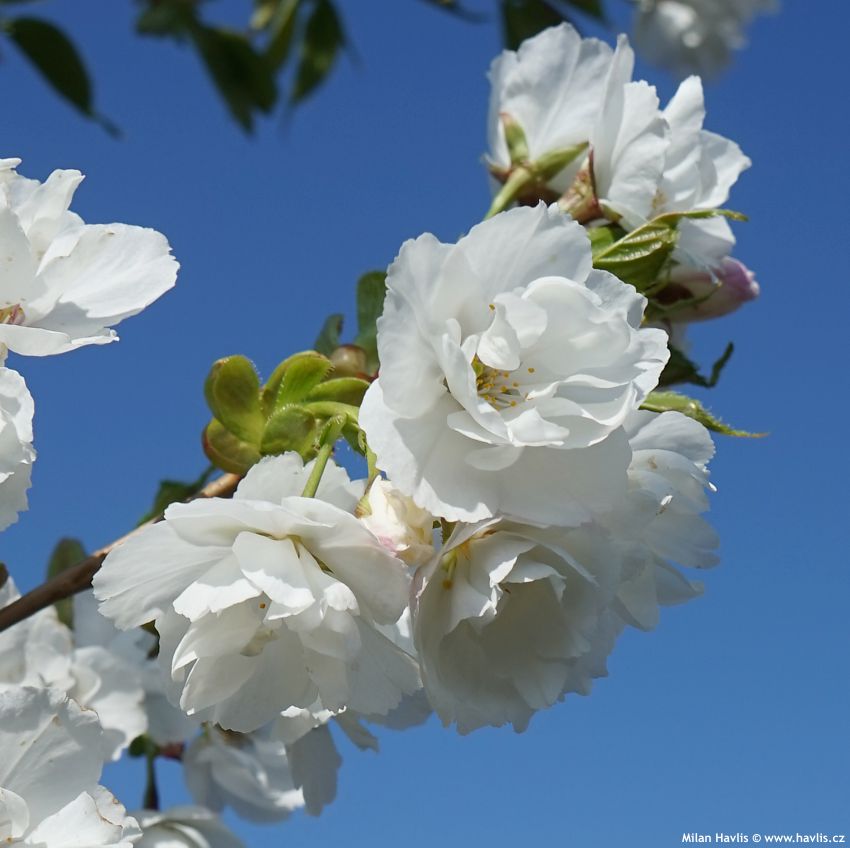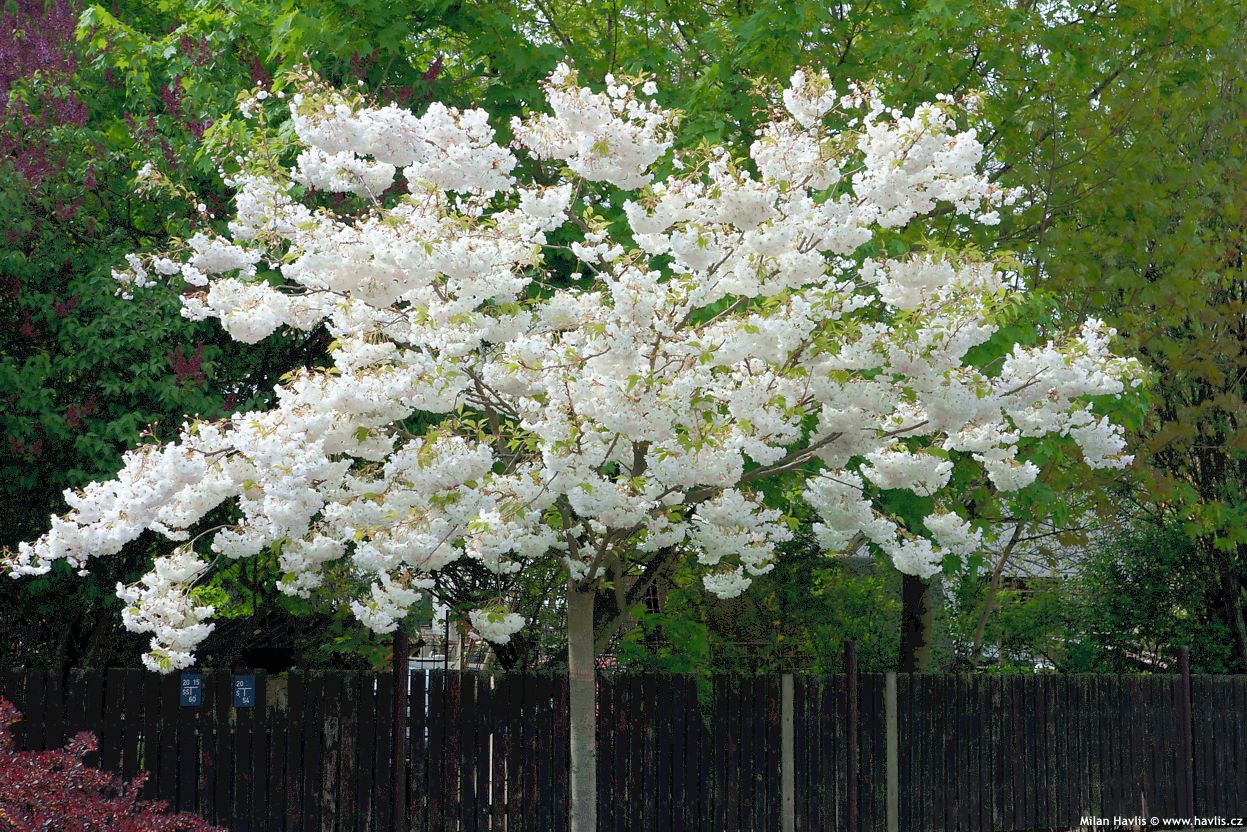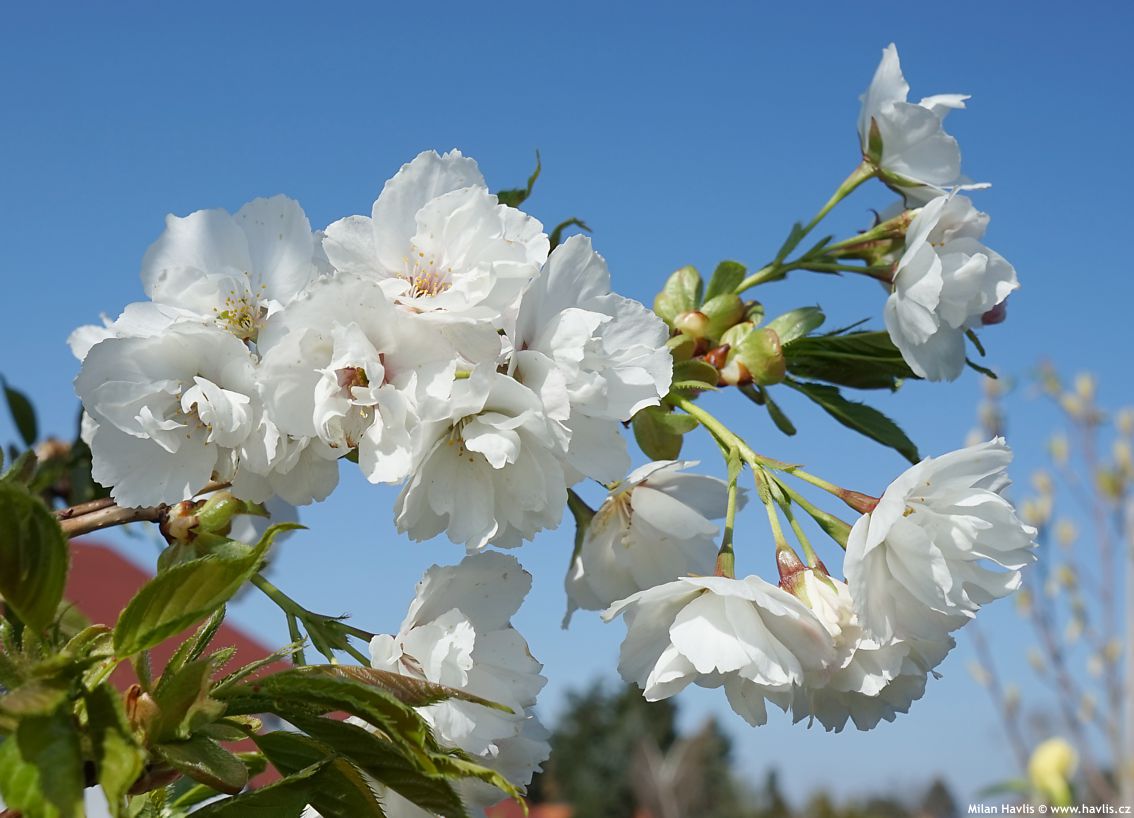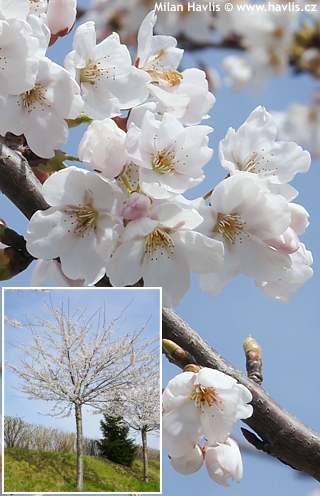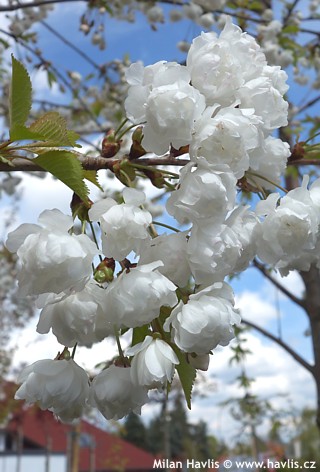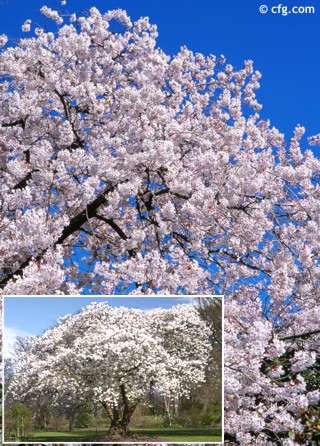Prunus serrulata (syn. 'Mount Fuji') 'SHIROTAE' flowering cherry
Prunus
The prunus genus contains over 400 species which are useful and beautiful at the same time. They are cherries, plums, peaches or sloes, as well as flowering Japanese cherries, cherry laurels etc. This flowering cherry is called sakura in Japan and represents a typical species of flowering cherry cultivated for abundance of flowers early in the season as a herald of the new growing season. Its native habitat covers a large area in East Asia including Japan, China, Vietnam, Korea, and India.
Shirotae is a sought-after variety of flowering cherry with snow-white flowers. They are 4-5 cm across, semi-double, mildly fragrant and appear in profusion with the first warm days of April for about two weeks. At the end of flowering emerge bronze-tinged leaves which mature to dark green in summer and turn golden orange and scarlet red with some maroon hues in autumn. They are deciduous, broadly elliptic, 10-13 cm long, and conspicuously serrated at margins.
Shirotae grows slowly to moderately, forming a spreading, vase-shaped to almost flat-topped canopy with age. It can be lightly trimmed to achieve a neater framework, best done after flowering. Do not prune hard or cut into old wood – old trees may be prone to diseases and will not look good severely pruned.
Flowering cherries are not too fussy about soil type but will do best in constantly moist but well-drained, slightly acidic soil, in full sun. They can take frost and wind and remember to stake freshly planted trees well to a support for the first couple of years. Hardy to at least -27 °C (USDA zone 5).
Last update 10-10-2008; 24-04-2010; 27-02-2023
Goods are shipped all over Europe. For Russia and U.K. and for further details please read about SHIPPING OPTIONS HERE.
Are you interested in a serious discount for orders NOV-FEB? Check your options here.
THE PRICES INCLUDE VAT of 15%. For quick conversion you can use 1 CZK = approx. 0.04 EUR
- STANDARD QUALITY - Plants of this group are 1st class quality with number of branches and overall density adequate to their size and age, considering they were container grown.
- DE LUXE QUALITY - This label guarantees a luxurious quality of manually selected plants that, compared to their height and age, are exceptionally dense and beautiful.
- EXTRA - These plants are usually mature and bigger specimens with exceptional overall appearance.
- STANDARD (as described in the plant form) means a tree with a trunk of 190-210 cm and a crown at the top, unless specified differently. The commercial size for trees is their girth measured in the height of 1m from ground.
- HOBBY - These plants are of the same quality as our standard-quality plants but younger and therefore cheaper.
- SHRUB - a woody plant with branches growing bushy from the ground level.
- HALF-STANDARD or MINI-STANDARD - a small tree with shorter trunk, its size is usually specified.
- FEATHERED - These are trees with branches growing already from the base of the trunk and up along the stem.
- GRASSES and PERENNIALS - Sizes given usually read the diameter of the pot or the clump, as specified.

































